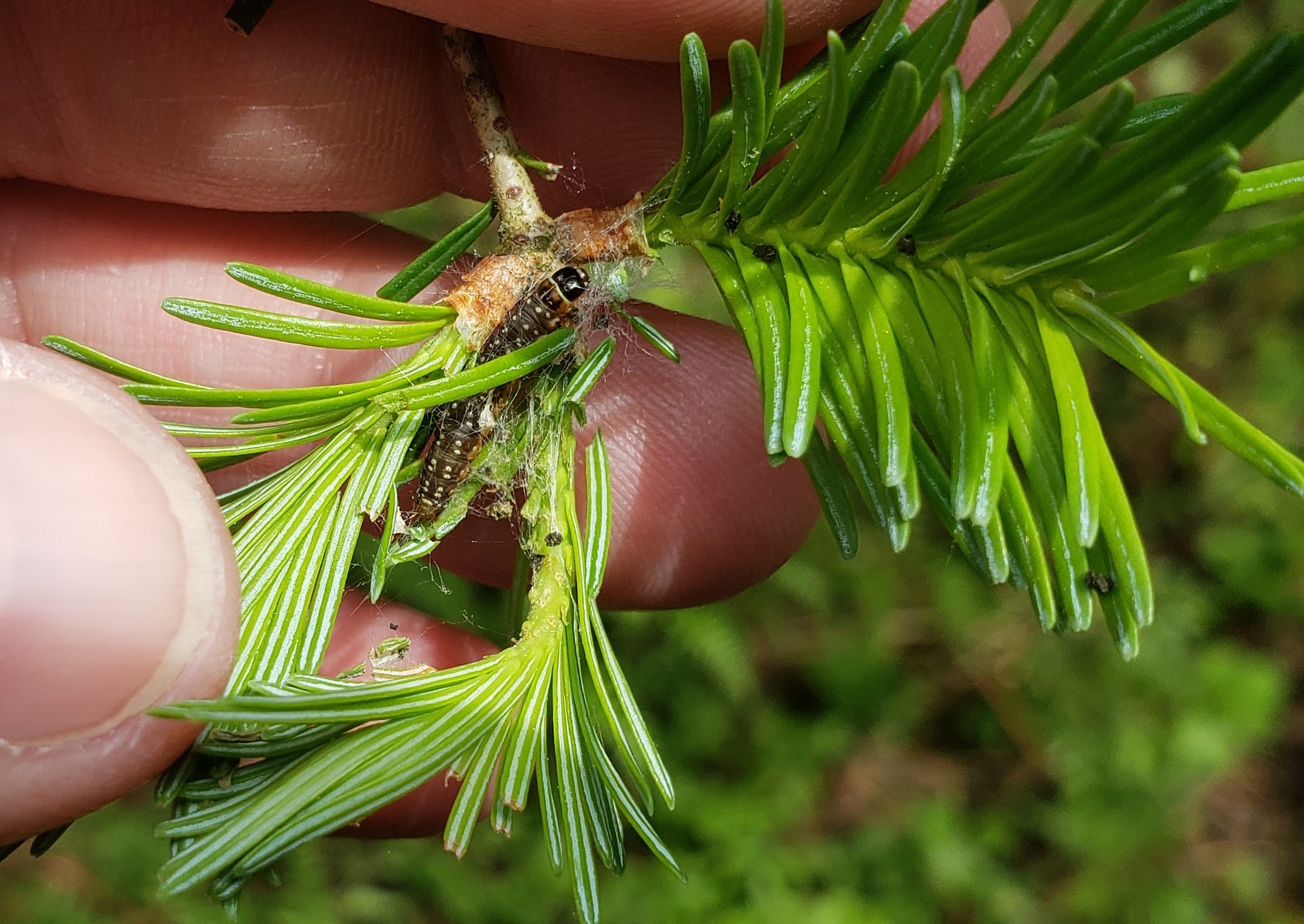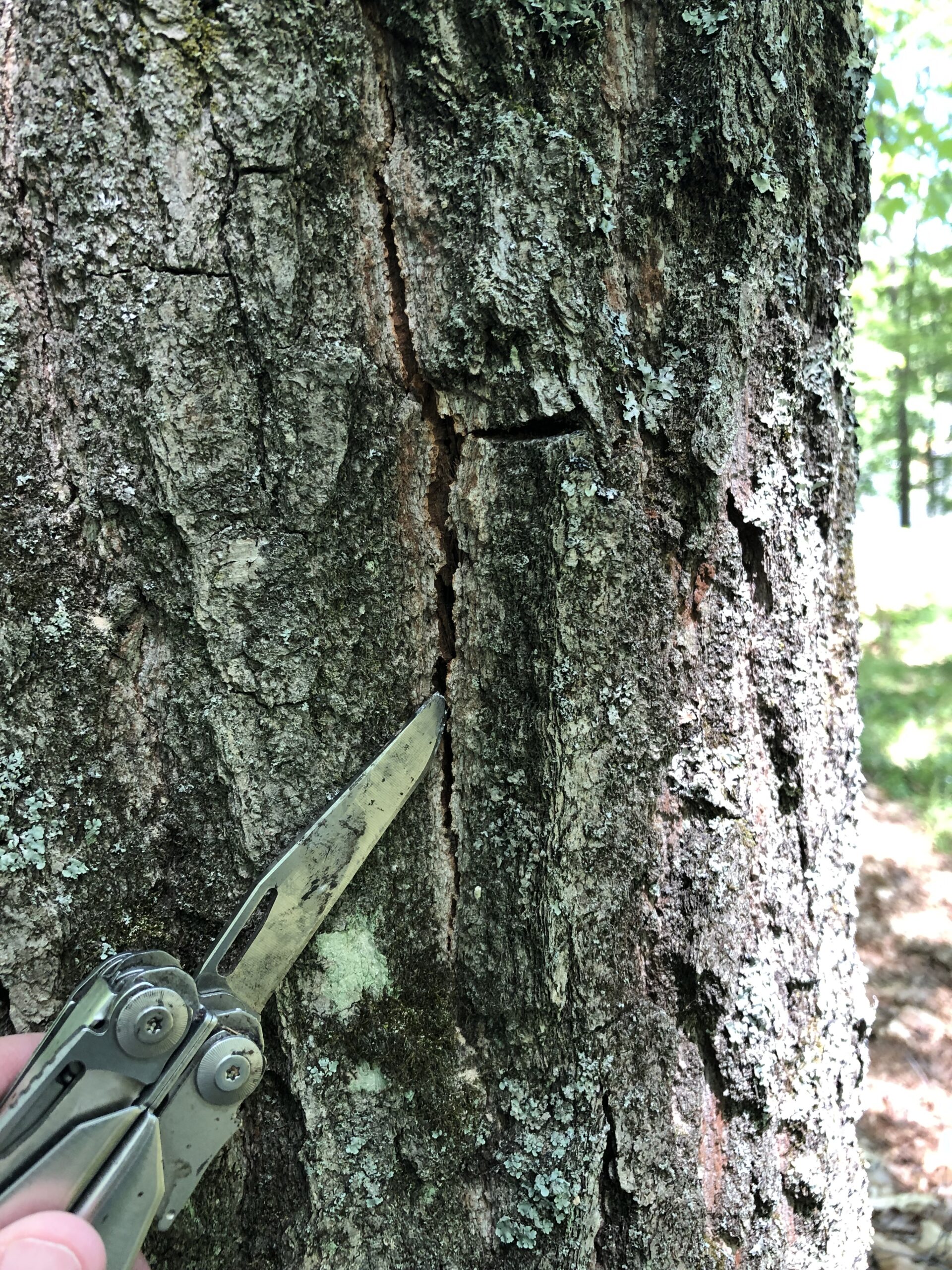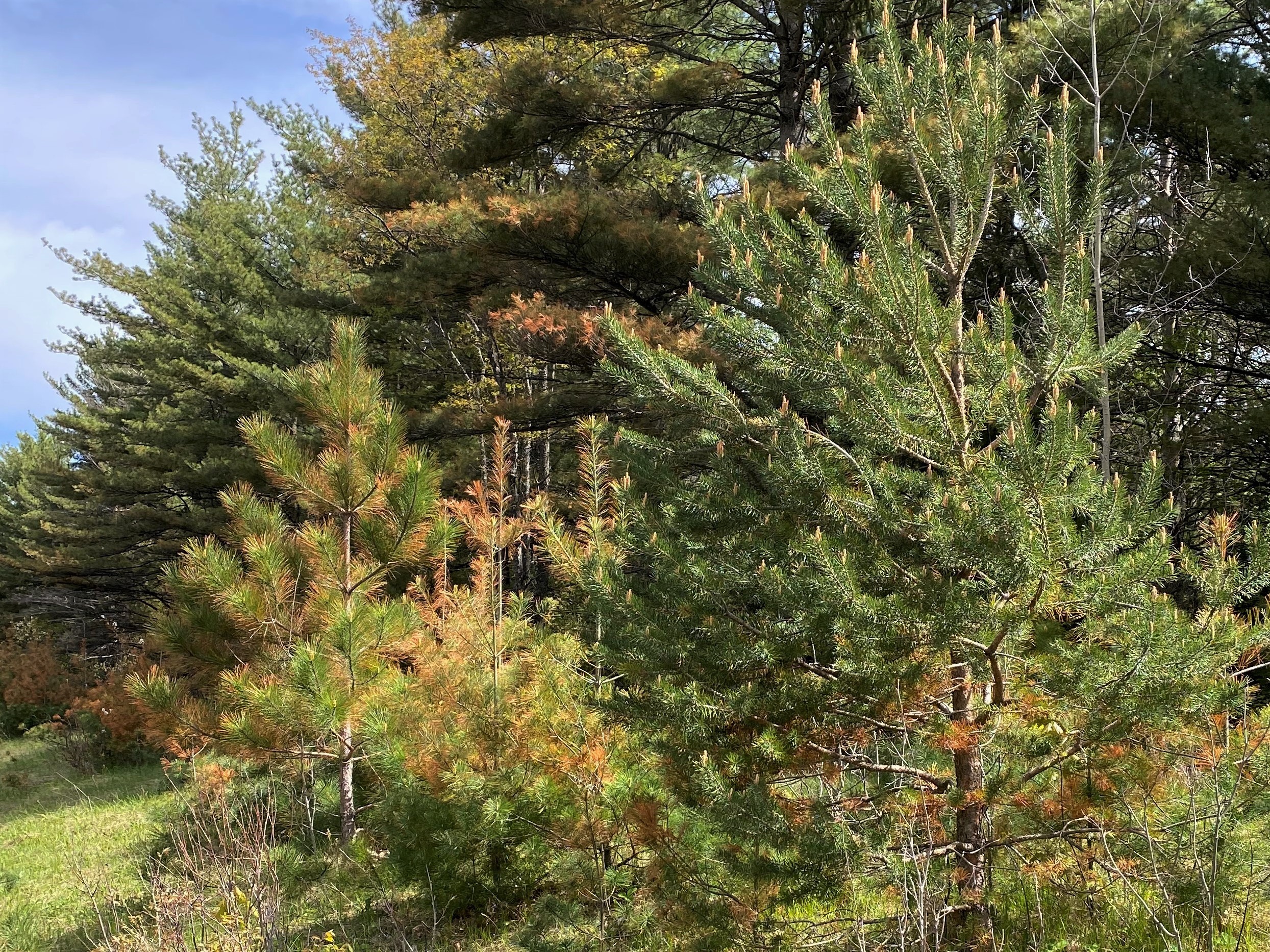By Linda Williams, DNR Forest Health Specialist, Woodruff, Linda.Williams@wisconsin.gov or 920-360-0665
It seems to be a good year for insects, and several leaf beetles and leaf rollers have caused localized defoliation already this summer.
By Linda Williams, DNR Forest Health Specialist, Woodruff, Linda.Williams@wisconsin.gov or 920-360-0665
It seems to be a good year for insects, and several leaf beetles and leaf rollers have caused localized defoliation already this summer.
By Linda Williams, DNR Forest Health Specialist, Woodruff, Linda.Williams@wisconsin.gov or 920-360-0665
Lecanium scale is popping up in a few areas of Oneida and Vilas counties. These scale insects insert their mouthparts into twigs and suck the sap of the tree. They release honeydew, which can be collected by ants or may coat leaves and anything located under infested trees (i.e., yard furniture or vehicles). Sooty mold can grow on that sticky material and turn things black, so homeowners may want to rinse off the honeydew from outdoor items on a regular basis.
By Linda Williams, DNR Forest Health Specialist, Woodruff, Linda.Williams@wisconsin.gov or 920-360-0665
Spruce budworm is a native insect with periodic outbreaks that defoliate spruce and balsam fir in the Midwest. While these caterpillars have pupated and moths are already emerging to mate and lay eggs, spruce budworm defoliation is now becoming noticeable in northern and central Wisconsin as clipped needles stuck in caterpillar webbing turn rusty red.

Spruce budworm larvae had webbed together the new growth. Note some clipped needles in the webbing that will turn rusty red in color. Photo: Wisconsin DNR
Continue reading “Another Year Of Spruce Budworm Defoliation”
By Linda Williams, DNR Forest Health Specialist, Woodruff, Linda.Williams@wisconsin.gov or 920-360-0665
The spiny oak sawfly feasts again. While defoliation by this insect is common in understory oaks, this year, lower branches of overstory oaks have also seen damage. All damage so far has been observed on red oaks. Previously we saw a widespread outbreak in 2005 with lesser reports of damage in 2007, 2016, 2017 and 2021.
Continue reading “Spiny Oak Sawfly And Red Oak: A One-Sided Love Story”
By Linda Williams, DNR Forest Health Specialist, Woodruff
Linda.Williams@wisconsin.gov or 920-360-0665
Wisconsin has a few leaf-eating caterpillar species that are out early in the spring. Forest tent caterpillars, eastern tent caterpillars and spongy moth caterpillars cause varying levels of tree damage and are often mistaken for one another.
Continue reading “Hairy Spring Caterpillars – Which One Do You Have?”
By Linda Williams, DNR Forest Health Specialist, Woodruff
Linda.Williams@wisconsin.gov, 920-360-0665
Have you ever seen an oak wilt fruiting body? Oak wilt is a fungal disease that kills trees in the red oak group (northern red oak, northern pin oak, black oak and other oaks with points on their leaves). Trees in the white oak group (white oak, burr oak, swamp white oak and other oaks with rounded leaves) are more resistant to the disease, but branches or branch tips can still be killed.

Oak wilt pressure pads can create a crack in the bark, allowing beetles to get into the spores. Photo: Wisconsin DNR
Continue reading “On The Lookout For Oak Wilt Fruiting Bodies”
By Michael Hillstrom, DNR Forest Health Specialist, Fitchburg, michael.hillstrom@wisconsin.gov
Now is the time to watch for oak wilt! Symptoms typically appear in southern Wisconsin in late June and in northern Wisconsin during July. Watch for browning leaves starting at the top of the canopy and progressing downward. Most leaves will fall from infected trees as they die, typically within two to four weeks.
Several management methods are available to contain oak wilt pockets, so consult your local forest health specialist for guidance on your best options.
The forest health team is also working to evaluate new control methods. Rapid response is currently being tested to more formally evaluate if a new oak wilt infection in a single tree can be stopped before it reaches the roots and spreads to nearby oaks. There is observational data that this method works, but more formal tests are desired. Continue reading “June To October: Oak Wilt Watch!”
By Linda Williams, DNR Forest Health Specialist, Woodruff
Linda.Williams@wisconsin.gov or 920-360-0665.
As you begin your summer travel, you may notice that many white pine trees along northern Wisconsin roadways have a lot of brown needles on them. Although it may seem concerning, most of these trees are sending out new needles as we speak.

Different conifer species can be impacted differently by salt spray. The white pine in the middle also shows lower branches that are green because they were protected by snow. Photo: Wisconsin DNR.
Continue reading “I Spy… Browning White Pine Stands Along Roads”
By Ethan Wachendorf, DNR Forest Health Lab Technician, Fitchburg, ethan.wachendorf@wisconsin.gov or 608-273-6276
Have you noticed orange, jelly-like growths on cedars this spring? These growths may look like tiny octopus creatures with legs extending all directions, but they’re actually spore horns caused by a fungus.
Continue reading “When It Rains, It Spores! Orange Spore Horns Emerge”
By Linda Williams, DNR Forest Health Specialist, Woodruff
Linda.Williams@wisconsin.gov or 920-360-0665.
Introduced basswood thrips are tiny, invasive insects that feed inside tree buds in early spring. Leaves are then deformed when they expand and can look like frost or wind has damaged them.

An adult introduced basswood thrips on the underside of an emerging basswood leaf. This photo is enlarged under a microscope. To the naked eye, they appear as tiny black specks on the underside of the leaf. Photo: Wisconsin DNR
Continue reading “Basswood Thrips: Tiny Terrors Of Basswood Leaves”